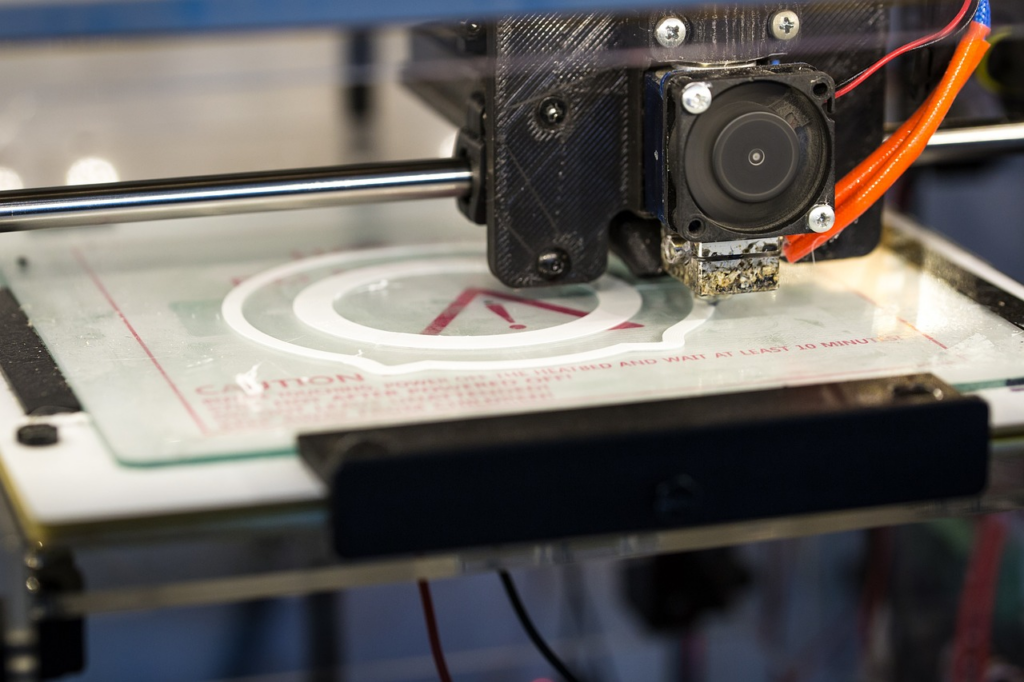In today's world, where innovation is a constant and technology is advancing at breakneck speed, it is impossible to ignore the impact that various technologies have on the way we live, work and relate to each other. From the industrial revolution to the information age, we have witnessed extraordinary advances that have radically transformed society. However, it is now that we are witnessing a veritable explosion of innovation, with emerging technologies that promise to revolutionize the world in ways that previously seemed unimaginable.
What technologies are revolutionizing the world?
On the stage of the 21st century, humanity is witnessing a spectacle of unprecedented innovation, driven by an accelerated pace of technological advances. Against this backdrop of transformation, the inevitable question echoes: "Which technologies are revolutionizing the world?". From the industrial revolution to the digital age, humanity has witnessed extraordinary advances that have redefined the limits of what is possible and fundamentally reshaped society.
Artificial Intelligence (AI)
Artificial Intelligence (AI) is one of the most fascinating and impactful technologies of our time and is widely considered to be the driving force behind the next industrial revolution. At its core, AI seeks to replicate the human capacity to think, learn and make intelligent decisions, but in a computational and automated way. Since its beginnings in the 1950s, AI has experienced exponential advances, driven by a diverse set of algorithms, techniques and approaches.
One of the most significant milestones in the evolution of AI has been the emergence of machine learning, a subfield that focuses on developing algorithms and models that can learn from data and improve their performance over time, without direct human intervention. Machine learning has enabled remarkable advances in a wide range of applications, from voice and image recognition to recommendation systems and machine translation.
In addition to machine learning, AI also covers other areas such as natural language processing (NLP), which aims to enable computers to understand, interpret and generate human language in a natural and effective way. Thanks to NLP, we see virtual assistants like Siri, Alexa and Google Assistant becoming an integral part of our daily lives, making tasks easier and providing instant information with just a few voice commands.

Internet of Things (IoT)
The Internet of Things (IoT) is one of the most disruptive and transformative technologies of the 21st century, promising to connect billions of devices and everyday objects to the internet, creating an intelligent, interconnected network that can collect, analyze and share data in real time. This capacity for interconnection is fundamentally changing the way we interact with the physical world around us, offering a myriad of benefits and opportunities in various areas of everyday life and industry.
One of the most striking aspects of the IoT is its application in smart homes, where devices such as thermostats, security cameras, household appliances and lighting systems are connected to the internet and can be controlled and monitored remotely via smartphones or virtual assistants. This not only provides users with greater convenience and comfort, but also promotes energy efficiency, security and the automation of domestic tasks.
In addition to smart homes, IoT is being widely adopted in urban environments to create smart cities. Sensors distributed throughout the city make it possible to monitor and manage a variety of aspects, such as traffic, air quality, street lighting, waste management and energy consumption. This enables better decision-making by city authorities, resulting in safer, more efficient and sustainable cities for their inhabitants.
Blockchain
Blockchain is a revolutionary technology that has the potential to fundamentally transform the way we record, store and share information. At its core, blockchain is a type of distributed and decentralized digital ledger, made up of a chain of data blocks interconnected in encrypted form. Each block contains a record of validated transactions, which are immutable and transparent to all network participants.
What makes blockchain so unique and powerful is its decentralized model and immutable nature. In contrast to traditional centralized database systems, where a central authority has control over data storage and validation, blockchain operates on a peer-to-peer network, where each node on the network maintains an identical copy of the ledger. This means that there is no single point of failure in the network and no centralized intermediary is needed to facilitate transactions.
In addition, the immutability of the blockchain is guaranteed through the use of cryptography and consensus algorithms, which ensure that once data is recorded in a block, it cannot be altered or tampered with retroactively. This gives an additional layer of security and trust to transaction records, making blockchain ideal for a wide range of applications where data integrity is crucial.
Quantum Computing
Quantum computing is an area of research and development that exploits the principles of quantum mechanics to perform computational operations. While classical computers process information in bits, which can be in a state of 0 or 1, quantum computers use qubits, which can exist in a superposition of these states. This allows qubits to process an exponentially greater amount of information simultaneously, providing a much greater computing capacity than classical computers.
One of the most intriguing features of quantum computing is the phenomenon of entanglement, where qubits can become intertwined in such a way that the state of one qubit is intrinsically linked to the state of another, regardless of the distance between them. This makes it possible to create highly correlated quantum systems, which can be exploited to perform complex computational operations efficiently.
Quantum computing has the potential to revolutionize a wide range of areas, from cryptography and security to molecular modelling and artificial intelligence. For example, quantum computers may be able to quickly break public key encryption algorithms currently considered secure, leading to the need to develop new encryption methods resistant to quantum computing.
Virtual Reality and Augmented Reality
Augmented Reality is a technology that merges virtual elements with the real world, allowing users to see and interact with digital information superimposed on the physical environment. While VR creates a completely new environment, AR enriches and enhances the existing environment by providing additional information and contextual interactions.
AR has been widely adopted in mobile applications and devices such as smartphones and tablets. For example, AR applications allow users to view furniture in their homes before making a purchase, try on products virtually before buying them and even receive directions and information about points of interest while exploring new cities.
In addition, AR is being used in sectors such as manufacturing, retail and education. In manufacturing, for example, workers can wear AR glasses to visualize assembly instructions superimposed on the parts they are working on, improving efficiency and reducing errors. In retail, AR can be used to create more immersive and personalized shopping experiences, while in education, it can be used to create interactive and engaging learning resources.
Synthetic Biology and Gene Editing
Recent advances in synthetic biology and gene editing are opening up new possibilities in the field of medicine, agriculture and biotechnology. The ability to design and modify living organisms is enabling the development of personalized medical treatments, more resistant and efficient agricultural crops, and even the creation of biodegradable and biocompatible materials.
Synthetic Biology
Synthetic Biology is an interdisciplinary discipline that combines principles from biology, engineering, chemistry and computer science to design and build artificial biological systems or reprogram existing biological systems to perform new functions. This involves the construction of new genes, genetic circuits and even entire organisms, using genetic engineering and molecular biology techniques.
Synthetic biology has a wide range of applications in various fields. In medicine, for example, researchers are exploring the possibility of designing genetically modified organisms to produce drugs, vaccines and personalized therapies. In addition, Synthetic Biology is being used in the production of biofuels, in environmental remediation and in agriculture, where scientists are working to develop agricultural crops that are more resistant to pests, diseases and adverse weather conditions.
However, Synthetic Biology also raises important ethical, legal and social issues, especially when it comes to creating genetically modified organisms (GMOs) that can be released into the environment. It is crucial that these issues are carefully considered and addressed to ensure that Synthetic Biology is used responsibly and safely.
Gene editing
Gene editing is a specific technique within synthetic biology that allows scientists to make precise changes to an organism's DNA, modifying specific hereditary characteristics. One of the best-known and most powerful tools for gene editing is CRISPR-Cas9 technology, which works like "molecular scissors" capable of cutting DNA in specific places and replacing or modifying genetic sequences.
Gene editing has the potential to revolutionize medicine, agriculture and many other fields. In medicine, for example, researchers are exploring the possibility of using gene editing to correct genetic mutations associated with hereditary diseases such as cystic fibrosis, muscular dystrophy and sickle cell anemia. In addition, gene editing is also being used to develop therapies for cancer, HIV and other complex diseases.
In agriculture, gene editing can be used to develop crops that are more resistant to diseases, pests and adverse weather conditions, reducing the need for pesticides and chemical fertilizers. In addition, gene editing can also be used to improve the nutritional quality and yield of crops, helping to feed a growing world population.
Renewable Energies and Energy Storage
Renewable energies come from natural sources that are constantly replenished, such as sunlight, wind, moving water, the earth's heat and biomass. One of the main advantages of renewable energies is that they do not emit greenhouse gases or atmospheric pollutants when generating electricity, which helps to mitigate the impacts of climate change and reduce air pollution.
Solar energy is one of the most promising and widely adopted renewable sources. Photovoltaic (PV) solar energy converts sunlight into electricity using solar panels, while solar thermal energy uses the sun's heat to generate steam and drive electricity-generating turbines. In addition, wind energy is another significant source of renewable energy, using wind turbines to convert the kinetic energy of the wind into electricity.
Energy storage is essential for overcoming the challenges associated with the intermittency and variability of renewable energies, allowing the energy generated to be stored and used when needed. There are several energy storage technologies under development and deployment, including lithium-ion batteries, pumped hydro storage systems, thermal storage, compressed air storage and more.
Lithium-ion batteries are currently the most widely used energy storage technology and have been instrumental in driving the adoption of electric vehicles and residential and commercial energy storage. However, other storage technologies, such as pumped hydro storage, are being explored to provide large-scale, long-duration storage.
3D Printing and Additive Manufacturing
3D Printing and Additive Manufacturing are transforming the way we design and produce physical objects. By enabling the creation of objects layer by layer from materials such as plastic, metal and ceramics, these technologies are democratizing the manufacturing process, allowing mass customization and the production of complex, customized parts quickly and economically.

Electric and autonomous vehicles
With growing concerns about air pollution and traffic safety, electric and autonomous vehicles are becoming increasingly popular. By replacing internal combustion engines with electric motors and introducing autonomous driving systems, these vehicles promise to reduce greenhouse gas emissions and the number of accidents on the roads, while offering passengers greater comfort and convenience.
Precision Medicine and Gene Therapy
Precision Medicine and Gene Therapy are revolutionizing the treatment of diseases, offering personalized approaches based on each patient's genetic and molecular profile. With advances in genomic sequencing, diagnostic imaging and gene-based therapies, doctors are being able to identify and treat diseases more effectively, improving outcomes for patients and reducing long-term healthcare costs.
Technological advances
We are living in a time of unprecedented change, driven by technological advances that are transforming every aspect of our lives. As we continue to explore and harness the potential of these technologies, it's exciting to imagine what the future holds and how they will continue to shape the world around us.
So get ready to be surprised, because the future is closer than you think, and it's being shaped by the technologies that are revolutionizing the world.
See also: What is the best calorie counting app?
March 31, 2024

She has a degree in Literature - Portuguese/English, and is the creator of the Escritora de Sucesso website. As a writer, she seeks to expand everyone's knowledge with relevant information on various subjects. At Trend-Topics, she brings news and content ranging from entertainment to the country's economic situation.






